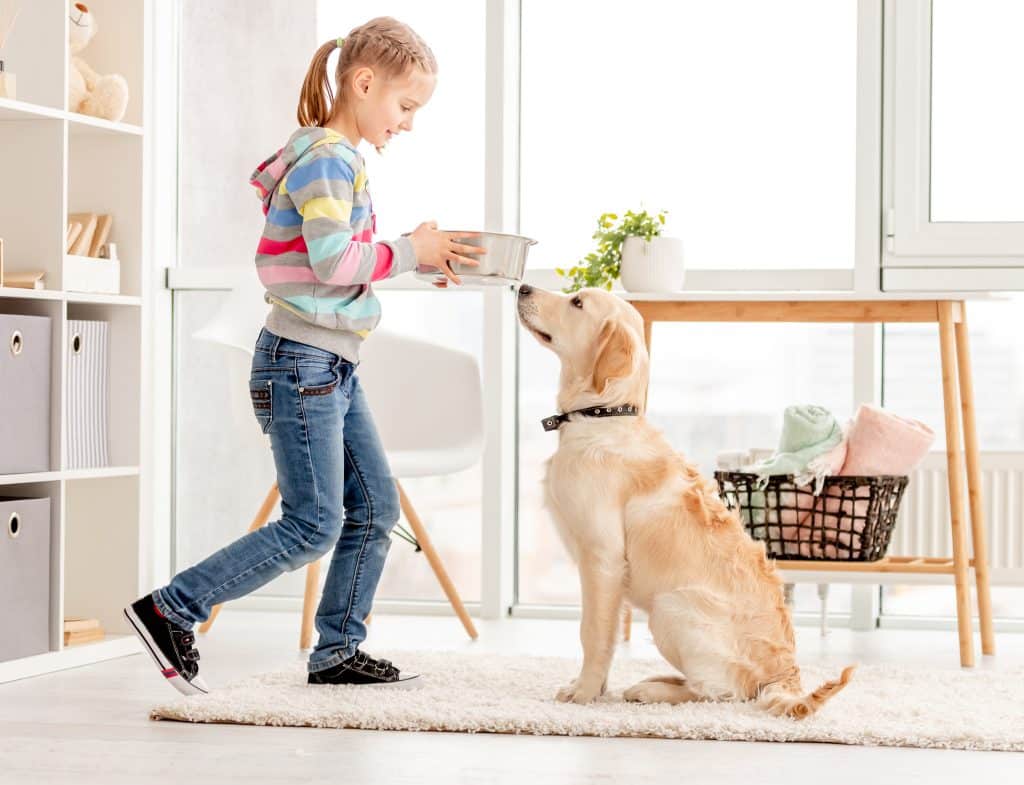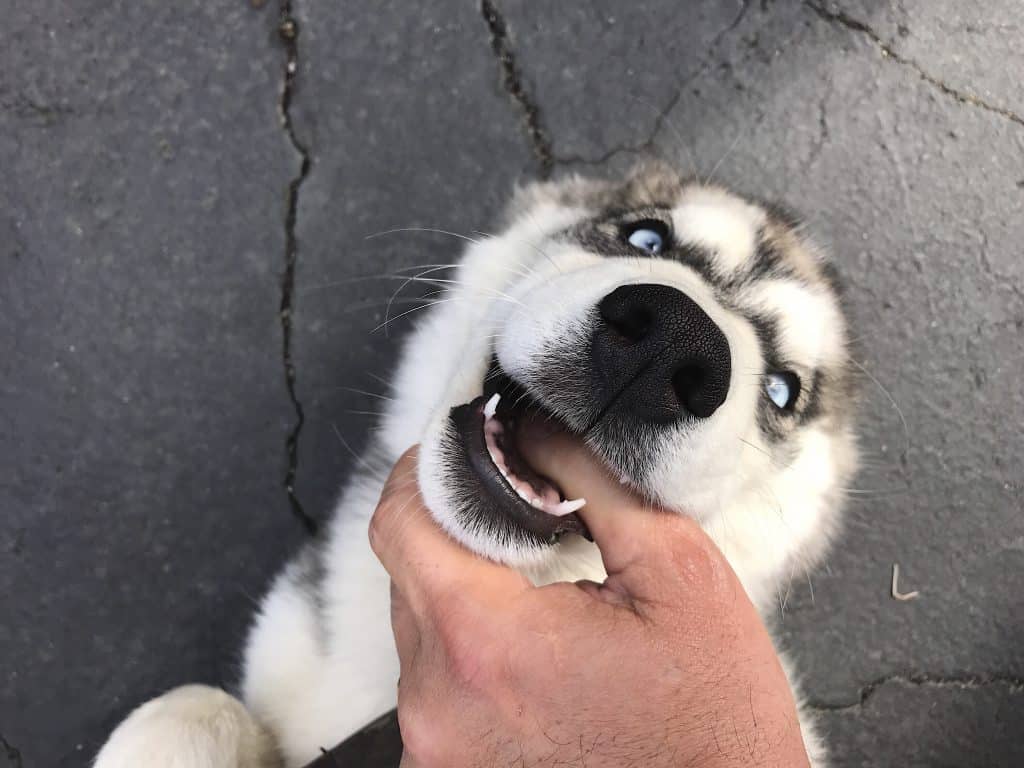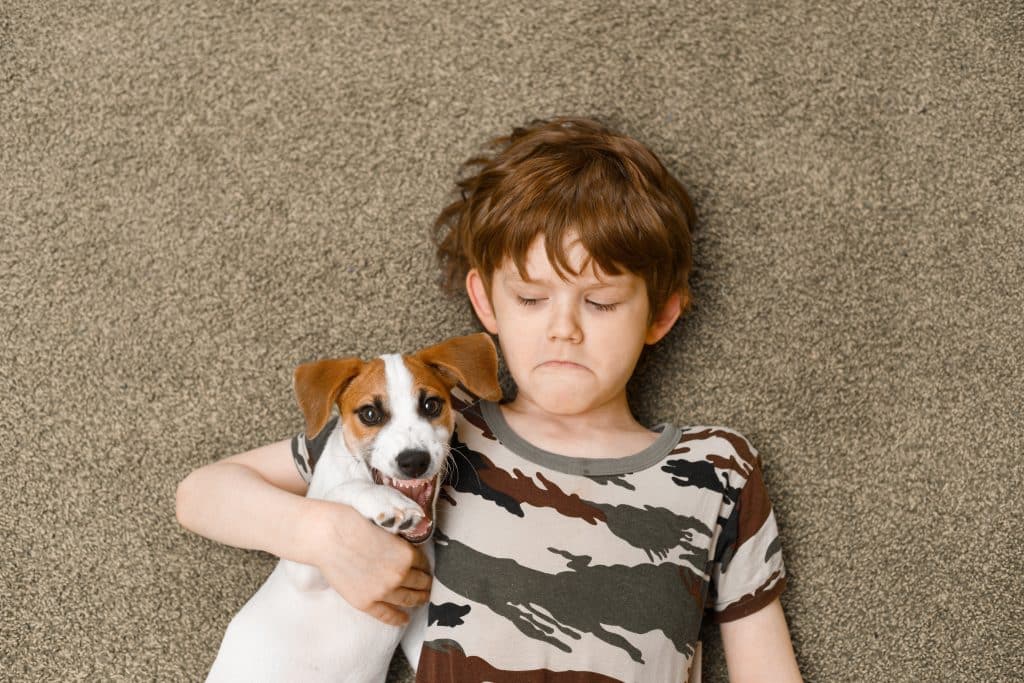If you’re a new puppy owner, you may have noticed that your furry friend likes to explore the world with their mouth, which can include biting. While this behavior is normal for puppies, it’s important to teach them that biting is unacceptable, especially if they’re interacting with humans. This guide will provide some tips on teaching your puppy to stop biting, so you can ensure a safe and happy relationship with your furry companion.
Training A Puppy Early On

Undoubtedly, having a new puppy in the household is an intense and exciting experience. They are cuddly, adorable, and full of energy. However, it is important to remember that they are also highly malleable during their first weeks of life. This is the perfect time to begin teaching them fundamental training commands, such as potty training and crate training, to name but two.
As a pet owner, it’s important to take an active role in a puppy’s upbringing and remember that the effort put into training pays off tenfold in the long run. Starting early ensures your puppy grows into a well-behaved and happy adult dog. It is also an opportunity to bond with your pet as you teach them to understand and communicate with you.
Tips To Teach A Puppy To Stop Biting
It’s no secret that puppies like to explore with their mouths, but it’s important to remember that this behavior must be curtailed to become mature and socially acceptable adult dogs. Here are some tips on how to teach your puppy not to bite:
Provide Appropriate Chew Toys

The first tip for teaching a puppy to stop biting is to provide appropriate chew toys. Puppies have a natural urge to chew and often use their teeth to explore the world around them. To prevent them from using their teeth on inappropriate things like furniture or shoes, it’s important to provide them with plenty of chew toys. Chew toys give your puppy an outlet for their chewing behavior and help promote healthy teeth and gums.
When choosing chew toys, it’s important to choose safe and durable ones. Toys that are too small can be a choking hazard, and toys that are not durable can break apart and pose a risk to your puppy’s health. Popular chew toys for puppies include KONG toys, rope toys, and chew bones. You can also try freezing some of your puppy’s chew toys to make them more appealing and soothing for teething puppies.
By providing your puppy with appropriate chew toys, you can redirect their biting behavior to acceptable items and help them learn that chewing on furniture, shoes, or other inappropriate items is unacceptable.
Use Positive Reinforcement

Positive reinforcement is a training technique that involves rewarding your puppy for good behavior. When your puppy stops biting you, reward them with praise, petting, or a treat. This reinforces positive behavior and helps your puppy learn that biting is not how to get attention or affection.
It’s important to be consistent with your rewards and use them every time your puppy exhibits good behavior. This will help your puppy understand desirable behaviors and lead to positive outcomes.
Using positive reinforcement can also help strengthen your bond with your puppy. Puppies trained with positive reinforcement tend to be more obedient and responsive to their owners.
Say “No” Or “Ouch”

The second tip for teaching a puppy to stop biting is to use positive reinforcement. Positive reinforcement is a training technique that involves rewarding your puppy for good behavior rather than punishing them for bad behavior. When your puppy stops biting you, you can reward them with praise, petting, or treats. This reinforces positive behavior and helps your puppy learn that biting is not how to get attention or affection.
When using positive reinforcement, it’s important to reward your puppy immediately after they stop biting. This helps them associate the reward with the behavior you’re trying to reinforce. You should also be consistent with your rewards so your puppy learns that good behavior always results in a positive outcome.
Timeouts

If your puppy continues to bite, you can put them in a timeout for a few minutes. This should be done in a separate room or a crate. This helps your puppy learn that biting leads to a loss of attention and playtime.
It’s essential to use timeouts as a last resort and only when your puppy is exhibiting dangerous or aggressive behavior. Timeout should be brief and not used as a form of punishment.
It’s important to be consistent with your timeouts and use them every time your puppy bites. This will help your puppy understand that biting is not acceptable behavior.
Consistency

Consistency with your training is the fifth tip for teaching a puppy to stop biting. It’s important to be consistent with your commands and techniques so your puppy learns what is and isn’t acceptable behavior. This means everyone in your household should use the same commands and techniques when teaching your puppy not to bite.
Consistency also means being patient and persistent with your training. Teaching your puppy not to bite takes time and repetition, so it’s important to stick with it and not give up. If you’re consistent with your training, your puppy will eventually learn what is and isn’t acceptable behavior.
To maintain consistency, monitoring your puppy’s behavior and stepping in if they get too aggressive or overly excited is important. Taking a break or redirecting their behavior can be helpful. With consistent monitoring and timely intervention, you can minimize the risk of your puppy biting.
Exercise And Playtime

Exercise and playtime are crucial for puppies to burn off excess energy and prevent them from becoming bored or frustrated, which can lead to biting behavior. A tired puppy is less likely to bite out of frustration or boredom.
Regular walks, running, and playtime can help your puppy get the necessary exercise and mental stimulation. Puppies also enjoy interactive games such as fetch and tug-of-war, which can help strengthen their bond with their owner.
It’s important to avoid playing rough games or wrestling with your puppy, as this can encourage biting behavior. Instead, focus on games that promote gentle play and positive interaction.
Use These Tips To Teach Your Puppy To Stop Biting!
Teaching a puppy not to bite is an important part of their training and helps ensure a safe and happy relationship with humans. By providing appropriate chew toys, using positive reinforcement, saying “no” or “ouch”, using timeouts, and being consistent with your training, you can teach your puppy to be gentle with their mouth and interact appropriately with humans. Remember, teaching a puppy not to bite takes time and patience, but with consistent and positive training, you can help your puppy become a well-behaved and loving companion.